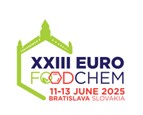Scientific journal
Journal of Food and Nutrition Research
Summary No. 1 / 2021
Ureña Peralta, M. – Campos Napán, J.
Optimization of the saponin removal process to improve quinoa product quality and increase protein content
Journal of Food and Nutrition Research, 60, 2021, No. 1, s. 59-65
Milber Ureña Peralta, Academic Department of Food and Agricultural Products Engineering, National Agrarian University La Molina, Av. La Molina s/n – La Molina, 15024 Lima, Peru. E-mail: moup@lamolina.edu.pe
Received 8 September 2020; 1st revised 17 December 2020; 2nd revised 5 February 2021; accepted 25 February 2021; published online 7 March 2021.
Summary: Highest quality quinoa products require maximal extraction of saponins to improve taste and eliminate digestive inhibitors. However, current saponin removal methods have not been optimized to achieve this quality, nor tested to improve other important nutritional and operational factors. This study aimed to maximize the removal of saponins, improve protein content and effectively eliminate water usage by employing and optimizing the scarification process. The response surface method was applied to study the two key variables that affect saponin removal in the scarification process: rotational frequency and mass flow. The analysis of variance test was applied to optimize these two variables and the model was represented in both 2-D contour and 3-D response surface graphs. The final results showed over 99.0% saponin extraction as well as an 18.6% increase in protein content, both significant improvements over existing saponin removal methods. As scarification is a dry process, it eliminates the use, remediation and disposal of water required in standard saponin removal, and thus improves the overall sustainability of quinoa processing.
Keywords: quinoa; saponin; scarification; process optimization; sustainability; protein
Download:
(pdf, 481.21 Kb, 2436x)










